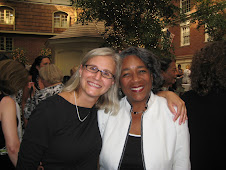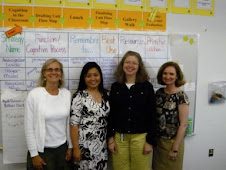Jim Hatten developed the following independent unit for students to complete outside of class for a book of their choosing.
Each quarter, English 10 students select one book to read outside of class. Though somewhat structured, the purpose of the outside reading project is to help students develop into independent readers by allowing them to choose a topic or title that is of interest to them.
During the quarter, students are expected to demonstrate proficiency at comprehension, interpretation, and evaluation of reading.
In Quarter 3 of English 10, the category for the outside reading project is a book that has won a significant publishing award such as the ALA, Caldecott Medal, the Pulitzer Prize, the ALA Alex Awards, and many, many others.
A parent must approve the book chosen by the student and needs to sign the cover to this packet signifying their approval and understanding of the project. Students complete projects spread throughout the quarter and hand them in on time or ahead of time to receive full credit.
The following Thinking Map assignments are part of the independent study. The descriptions have been taken right from the student assignment packet.
Circle Map Clue Search
Examine the book before reading and complete a circle map for their "clue search" for this pre-reading, prediction activity. Put the book's title in the middle of the circle map and define the book with words and phrases that you have found through examining the following possible sources of hints:
Dedication
Title
Author
Cover illustration
Back cover/jacket
What others said
A quick glance at a few pages
In the frame of the circle map, write your predictions about the book.
Characterization Tree Map
Characterization is the process of conveying information about characters in a piece of fiction. Characters are usually presented through their actions, dialect, and thoughts, as well as by description. Characterization can regard a variety of aspects of a character, such as appearance, age, gender, educational level, vocation or occupation, financial status, marital status, social status, cultural background, hobbies, sexual orientation, religious beliefs, ambitions, motivations, personality, etc.
After reading one-fifth of your book, you should have a good idea of the development of the main character (or person of central focus in your non-fiction book). The author should be developing the main character – how he/she looks and acts. Complete a tree map using information from the first one-fifth of your book.
Four ways to learn about characters--Look carefully for quotations about the main character’s appearance and personality to collect on the tree map. Character development is done in four ways. The four branches of your tree map need to reflect the following four ways of character developement.
Narrator’s Description--The way the character is described by the narrator (what the author literally says about what a character is like);
Character’s words--what the character says to describe him/herself;
Character’s actions--what the character does (the actions and physical appearance of that character);
Other characters say--what other characters say or do to that character.
Cause/Effect Multi-Flow Map
Create a multi-flow map that analyzes the causes and effects of the central conflict in the book. The causes of the conflict are on the left, and the major effects of that conflict are on the right.
Double Bubble Comparison to Another Text
Using a double bubble map, compare and contrast your book, character or characters, events, issues, topics, motifs or theme to another book, movie, story, play or other work of literature.
--Jim Hatten, English 10
Thursday, February 28, 2008
Tuesday, February 26, 2008
Organizing Writing
Sarah Burgess submitted the following information about recent NUA strategies in her classroom.
My English 10 students are working on analytical essays based on their reading of Julia Alvarez’s In the Time of the Butterflies. I differentiated the pre-writing process per my LINKS assignment this past month. After writing question papers and crafting thesis statements (that were differentiated per their ability levels), students were invited to select the type of outline they would most like to use. The choices included: a traditional written outline, an NUA thinking map (brace map), and a drawing for understanding outline (based on Linda Rief’s work).
Many students chose the brace map and completed their rough outlines of body paragraphs on large 11x17 sheets of paper. I was really pleased because those outlines are the easiest to share, and I was able to walk around with the thinking map outlines as models for other students.
Many students chose the brace map and completed their rough outlines of body paragraphs on large 11x17 sheets of paper. I was really pleased because those outlines are the easiest to share, and I was able to walk around with the thinking map outlines as models for other students.

In addition, I found that some students were using thinking maps as a brainstorming device before even beginning their outlines. Some were using bubble maps when trying to determine how they would characterize a particular sister. Others experimented with double bubble maps to compare two particular sisters in preparation for discussions of how they may have influenced each other.
One NUA strategy, “Read Draw Talk Write” technique, seems somewhat similar to the “drawing for understanding” outline that I have inserted below. Students have read the book, they are drawing their paper topics, they will talk me through the outline, and finally will write their papers.

I am also thinking about adding the 4-Square Writing graphic organizer as an outline option in the future. I like how this visual aid forces students to think about how their examples and supporting details relate to the topic.
--Sarah Burgess, English 10 Teacher
Labels:
4-square writing,
brace map,
thinking maps,
writing
Subscribe to:
Posts (Atom)






